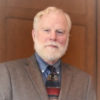Back to series



The Uses of Fantasy
Click here to open a Print-Friendly PDF
Only a few years after the phenomenal success of the film trilogy based upon J.R.R. Tolkien’s Lord of the Rings, C.S. Lewis’s Narnia books are off to an equally promising start on the silver screen. Worldwide receipts for Disney/Walden Media’s adaptation of The Lion, the Witch and the Wardrobe surpassed a half a billion dollars within three months of the film’s release, putting it on pace to become Disney’s highest grossing live-action film ever (Variety, January 16, 2006).
Although these high-profile cinematic adaptations have revived interest in Tolkien’s and Lewis’s fantasy books published half a century ago, the film versions have also revived familiar criticisms about fantasy writing as a lightweight genre, best suited for children—or for adults who wish they had never grown up. In his review of The Fellowship of the Ring, Elvis Mitchell in the New York Times (December 19, 2001) condescendingly described Tolkien’s classic work as “the most intimidating nerd/academic fantasy classic ever.” Mitchell’s words seem to echo those of critic Edmund Wilson, who dismissed Tolkien’s massive tale as “essentially a children’s book which has somehow gotten out of hand” (The Nation, April 14, 1956).
 In the same way, recent reviews of The Lion, the Witch and the Wardrobe echo comments by earlier critics about the Narnia books themselves. Charles McGrath (New York Times, November 13, 2005) concluded that Lewis’s children’s books are not really about portraying the author’s world-view, but more about his desire to escape. In this off-hand remark, McGrath repeats an oft-sounded theme in A.N. Wilson’s biography of Lewis: that the distinguished Oxford don and brilliant Christian apologist was actually a victim of the “Peter Pan syndrome,” a refusal to grow up and see the world as it really is (C.S. Lewis, New York: Norton, p. 26).
In the same way, recent reviews of The Lion, the Witch and the Wardrobe echo comments by earlier critics about the Narnia books themselves. Charles McGrath (New York Times, November 13, 2005) concluded that Lewis’s children’s books are not really about portraying the author’s world-view, but more about his desire to escape. In this off-hand remark, McGrath repeats an oft-sounded theme in A.N. Wilson’s biography of Lewis: that the distinguished Oxford don and brilliant Christian apologist was actually a victim of the “Peter Pan syndrome,” a refusal to grow up and see the world as it really is (C.S. Lewis, New York: Norton, p. 26).
Although psychoanalysis has become all but extinct as a therapeutic science, it lives among reviewers and critics as a way of explaining why formidable intellects such as C.S. Lewis and J.R.R. Tolkien insisted on creating fantasy stories. Apart from its glib psychology, the dismissive approach so often adopted by journalists also reveals a lamentable ignorance about the fantasy genre itself.
In middle-brow circles, fantasy has a bad name. Normal, well-adjusted adults are supposed to resign themselves to the real world. Fantasy is seen as the domain of children, the mentally disturbed, or the sexually frustrated. In literature too, fantasy is often associated with nursery stories, comic books, or teen-targeted movies. But when writers of the first order—Franz Kafka, D.H. Lawrence, Ursula Le Guin, Margaret Atwood, and Gabriel García Marquéz, to name a few—turn to fantasy as their genre of choice, it is time to ask why serious authors write fantasies and why serious readers turn to them for enjoyment and contemplation.
“The problem with the real world, frankly, is that it is the only one we have” (FW 3). This remark by Eric S. Rabkin sums up as well in one sentence what other critics have taken chapters to say: fantasy seems to begin as an itch in the imagination, a sense that what might be, or what could never be, enriches the meaning of what is.
In pop culture, the most spectacularly successful creators of comic book and film heroes are those who know how to tap into the collective consciousness of their times. It is a commonplace of culture studies that Superman was created in the late ‘30s not as a swaggering Ubermensch but as the friend of ordinary folks trying to make ends meet. The Lord of the Rings was first published in 1954, but did not become a cult classic until the mid-’60s, when a whole generation of young people responded to the adventures of a simple, down-to-earth fellow called upon to do battle with a vast, almost faceless, enemy seeking to control a mysterious, all powerful new weapon. In recent years it has been the Harry Potter who becomes a wizard and Peter Parker who becomes Spiderman—the schlemiel as superhero.
The basic contrast between the realistic and the fantastic is as old as storytelling itself. Plato distinguished between two types of imitation, the icastic, representing things that may be found in the real world, and the fantastic, things that exist only in imagination. The great philosopher was suspicious of literary creation, as something was one step removed from physical reality and two steps removed from the perfect world of Forms. Yet to illustrate his point, he resorted to one of the most famous of all literary creations, the parable of people living in a cave who only see the shadows of real things outside.
 Contemporary critics tend to distinguish between two kinds of non-realistic stories, science fiction and fantasy. They would classify works by Jules Verne, H.G. Wells, and Isaac Asimov in one category and works by Lewis Carroll, J.R.R. Tolkien, and J.K. Rowling in another. The general sense is that in science fiction extraordinary events are brought about by imagined but plausible technologies, whereas in fantasy the extraordinary is brought about by magic or enchantment. Thus, science fiction writers are obliged to explain time travel or the means of surviving in space, while fantasy writers may people their stories with wizards or talking animals without troubling themselves about how such things might come to be.
Contemporary critics tend to distinguish between two kinds of non-realistic stories, science fiction and fantasy. They would classify works by Jules Verne, H.G. Wells, and Isaac Asimov in one category and works by Lewis Carroll, J.R.R. Tolkien, and J.K. Rowling in another. The general sense is that in science fiction extraordinary events are brought about by imagined but plausible technologies, whereas in fantasy the extraordinary is brought about by magic or enchantment. Thus, science fiction writers are obliged to explain time travel or the means of surviving in space, while fantasy writers may people their stories with wizards or talking animals without troubling themselves about how such things might come to be.
This distinction may have heuristic value, but it begins to break down when one considers actual texts by authors such as E.R. Eddison, Arthur C. Clarke, or Margaret Atwood. The more critics have tried to explain the difference between fantasy and science fiction, the more it seems a matter of emphasis rather than a clearly definable boundary. One might be able to conclude only that science fiction writers make more effort to make their imaginative worlds seems plausible according to the laws of nature as presently understood, whereas fantasy writers make less effort.
The most common charge against fantasy literature is that it is escapist, that it encourages a flight from reality. But C.S. Lewis responded that there are varieties of escapism. Children may be regaled by Peter Rabbit without wishing to become rabbits, but the “realitybased” story of the awkward novice who becomes the star athlete panders to a young reader’s actual fantasies and ambitions (SBJ 35).
Lewis’s friend and fellow fantasy writer, J.R.R. Tolkien, took his defense of fantasy a step further. In his classic essay “On Fairy Stories,” Tolkien acknowledged that a basic purpose of fantasy is Escape, but he sees this as a method of recovering reality, not retreating from it. Sometimes a flight of fancy may be the very thing required to give us an overview of our own world. What Anaïs Nin said about all art is especially true of fantasy: “It is the function of art to renew our perception. What we are familiar with, we cease to see. The writer shakes up the familiar scene, and as if by magic, we see a new meaning in it.” Thus the fantasy writer may offer what Kenneth Burke called “perspectives by incongruity,” making us view our own reality differently, not by casting a spell, but by breaking the spell of familiarity.
We can see this technique at work in Bernard Malamud’s classic tale “Angel Levine,” first published in 1958. “Angel Levine” is the story a Jewish tailor living in New York who endures a Job-like series of reverses: his business burns down, his son is killed in the war, his daughter runs off with a lout, his wife becomes terminally ill, and he himself suffers excruciating backaches. The tailor, named Manischevitz, calls out to God for relief and soon receives a visit from a black man in an ill-fitting suit who claims to be an angel on probation sent to help. Though the angel, named Alexander Levine, explains he was an observant Jew in life and sonorously recites a Hebrew prayer, Manischevitz just can’t believe that such an unprepossessing, not to mention wingless, character could be an angel sent from God, and so refuses any help. Levine is crestfallen and turns to leave, saying that if the poor tailor changes his mind, he can look him up in Harlem.
Soon afterwards Manischevitz sees Levine in a dream preening opalescent wings. His suffering unabated, the tailor finally decides in desperation to seek out the self-proclaimed angel in a part of the city he would usually never visit. On his first trip he sees Levine drinking in a honkytonk in the middle of the day and so turns back. But eventually he returns, overhears a conversation about how the spirit is an immaterial substance, invisible but embodied in things of every color, and he humbles himself before the slightly disheveled angel and asks for help. Levine bursts into tears, accepts Manischevitz’ apology, and then returns with him to the tailor’s apartment. Suddenly there is the sound of fluttering wings and Levine is gone. Manischevitz goes inside to discover his wife vigorous and well, busy tidying up what had seemed to be her deathbed. All he can offer her by way of explanation is “A wonderful thing, Fanny! Believe me, there are Jews everywhere.”
“Angel Levine” is both fantasy and parable, a tale about suffering but one with many comic elements. The last line of the story suggests that, even after his miraculous deliverance, Manischevitz is less amazed that Levine was an angel than that he was an observant Jew. Written in 1958, the story makes its point by indirection, using otherworldly elements as a commentary on very real this-worldly attitudes.
Ursula Le Guin offers a similar mixture of fantasy and parable in her much-anthologized story “The Ones Who Walk Away from Omelas,” first published in 1973. Omelas is a kind of fairy tale city, seen on the day of its magnificent Festival of Summer. The sunshine, the laughing children, the colorful banners and pleasure boats bobbing in the harbor make it seem a place of perfect happiness—as indeed it almost is. It is a city with no crime, violence, wars, or poverty. Its people need no king, no clergy, no ruling class, nor do they require any of the trappings of modernity—industrialism, advertising, mass media.
But the people of this near-utopia do have one terrible secret: all of their perfect happiness is built upon the terrible suffering of one child. By some devil’s bargain no one quite understands, city officials keep a feeble-minded child locked up in a cellar, fed only enough to stay alive, offered not even a kind word. When the children of Omelas reach an age of accountability, they are told about the child and some go to see it. After the first initial shock, most come to understand that their own happiness, and that of everyone they know, somehow depends upon the unhappiness of this one victim. And most eventually learn to make peace with this macabre arrangement.
But there are those who cannot make their peace. Some, upon first seeing the child, realize that they must leave the perfect city and take their chances elsewhere. Others, much older, may fall silent a day or two, speak to no one about their plans, but get up one morning and set their faces for the city’s gates. Not until the last paragraph of the story do we understand its title: “The Ones Who Walk Away from Omelas.”
As in Malamud’s “Angel Levine,” Le Guin utilizes fantasy not as a means of escape but as a means of confrontation. When asked about her sources, Le Guin explained that she first encountered the idea of a society whose happiness rested upon the suffering of one poor soul in Dostoevsky’s The Brothers Karamazov, then later in an essay by philosopher William James. It is a conundrum for would-be Utilitarians, those content to define the Good as “the greatest good for the greatest number.” The story offers a reductio ad absurdem critique of this easy formula, suggesting as well the lonely courage of naysayers in a largely self-satisfied society. As in Malamud, the genre of fantasy becomes an effective tool for both philosophical reflection and social commentary.
 Sometimes a fantasy story may be as much about the person who created it as about those reading it. A fantasy may be constructed as a simile of the self, a way for the author to say, “This is what it feels like to be me.” In Franz Kafka’s classic tale “The Metamorphosis,” for example, one cannot help but ponder parallels between the writer and his protagonist. “The Metamorphosis” (1915) is the story of Gregor Samsa, who goes to bed one night a man and awakens the next day with mandibles. Building upon this bizarre premise, the narrative is surprisingly realistic. Transformed into a giant insect, Gregor must figure out how to roll off his back to get out of bed, how to turn the door key without hands, and what food to eat, having lost his taste for human victuals. Gregor spends very little time pondering what has happened to him, but worries instead if he is going to lose his job and how to get along with his family, especially his domineering father. At first everyone, especially Gregor’s sister, seems to be making strides in adjusting to Gregor’s transformation. But eventually his father loses his temper and pelts the man-sized bug with apples, damaging Gregor’s carapace and leading eventually to his death.
Sometimes a fantasy story may be as much about the person who created it as about those reading it. A fantasy may be constructed as a simile of the self, a way for the author to say, “This is what it feels like to be me.” In Franz Kafka’s classic tale “The Metamorphosis,” for example, one cannot help but ponder parallels between the writer and his protagonist. “The Metamorphosis” (1915) is the story of Gregor Samsa, who goes to bed one night a man and awakens the next day with mandibles. Building upon this bizarre premise, the narrative is surprisingly realistic. Transformed into a giant insect, Gregor must figure out how to roll off his back to get out of bed, how to turn the door key without hands, and what food to eat, having lost his taste for human victuals. Gregor spends very little time pondering what has happened to him, but worries instead if he is going to lose his job and how to get along with his family, especially his domineering father. At first everyone, especially Gregor’s sister, seems to be making strides in adjusting to Gregor’s transformation. But eventually his father loses his temper and pelts the man-sized bug with apples, damaging Gregor’s carapace and leading eventually to his death.
Since it was published in 1915 (originally as “Die Verwandlung”), “The Metamorphosis” has lent itself to all manner of interpretation—psychoanalytic, Marxist, feminist, and Existentialist—but at some level the story seems to be an expression of Kafka’s own sense of self. Like Gregor Samsa, Franz Kafka was unmarried and lived at home with his family; suffered from insomnia and weak lungs (he died of tuberculosis in 1924); disliked his mundane job; and felt intimidated and overpowered by his father. Kafka once composed a letter to his father (which he never sent) proclaiming, “My writing was all about you. All I did there, after all, was to complain about the things I couldn’t complain about on your breast” (SSC 204).
When asked by a friend about the similarities of the surnames Samsa and Kafka, the author explained that the story was not a confession, but a kind of indiscretion. Hearing the story described as “a terrible dream, a terrible conception,” Kafka replied, “The dream reveals the reality, which conceptions lags behind. That is the horror of life—the terror of art.” (IF 380.)
In its broadest sense, then, fantasy literature is not at all an escape from reality, but a way of presenting one’s own vision of reality. In Slaughterhouse-Five Kurt Vonnegut, Jr., explains why two of his key characters, Billy Pilgrim and Eliot Rosewater, are such avid readers of science fiction. He says that “they had both found life meaningless, because of what they had seen in the war.... So they were trying to reinvent themselves and their universe. Science fiction was a big help” (101). Clearly, this is a religious or philosophical undertaking, a case of “Metaphysician, heal thyself.” Ursula Le Guin would probably agree with Vonnegut. As one critic has noted of her body of work, “For an atheist, Le Guin has spent an inordinate amount of time inventing religions and religious modes of feeling” (ULG 175).
It is interesting to note how many distinguished writers of science fiction—H.G. Wells, Arthur C. Clarke, Ursula Le Guin, Kurt Vonnegut—are those without religious faith, while some of the most well-known creators of fantasy—Lewis Carroll, George MacDonald, C.S. Lewis, J.R.R. Tolkien, Madeleine L’Engle—belong to communities of faith. It would seem that the former group, those more inclined toward rational explanations, see their fiction writing as a replacement for religion, while the latter, perhaps more accustomed to taking things on faith, see their fiction-writing as an expression of their religious views.
J.R.R. Tolkien went so far as to define fantasy writing as a form of worship, constructing imaginary worlds not for recreation, but as Re-creation, expressing the imago Dei within oneself. For Tolkien, fantasy was not one of the lower forms of literary expression, but rather one of the highest. His term for it was “Sub-Creation,” the god-like act of creating not just plots or people, but whole alternative worlds in which they may find a local habitation and a name (EP 67). And C.S. Lewis spoke for fantasy writers of philosophical persuasions when he commented on what is perhaps the most fundamental drive behind all literary fantasy: “No merely physical strangeness or merely spatial distance will realize the idea of otherness which is what we are always trying to grasp... you must go into another dimension. To construct plausible and moving ‘other worlds’ you must draw on the only real ‘other world’ we know, that of the spirit” (OS 12).

David C. Downing
AuthorDavid C. Downing, Author, is the Co-Director of the Marion E. Wade Center at Wheaton College in Illinois. He earned his PhD from UCLA and has written four scholarly books on C.S. Lewis: Planets in Peril (1992), The Most Reluctant Convert (2002), Into the Wardrobe (2005), and Into the Region of Awe (2005.) Downing also provided a critical introduction and over 400 explanatory notes to the new edition of C.S. Lewis's The Pilgrim's Regress, originally published in 1933 and reissued by Eerdmans in the Wade Center Annotated Edition (2014). Downing is a consulting reader on C.S. Lewis for the Publications of the Modern Languages Association (PMLA), as well as Christian Scholars Review and Religion and Literature.

 COPYRIGHT: This publication is published by C.S. Lewis Institute; 8001 Braddock Road, Suite 301; Springfield, VA 22151. Portions of the publication may be reproduced for noncommercial, local church or ministry use without prior permission. Electronic copies of the PDF files may be duplicated and transmitted via e-mail for personal and church use. Articles may not be modified without prior written permission of the Institute. For questions, contact the Institute: 703.914.5602 or email us.
COPYRIGHT: This publication is published by C.S. Lewis Institute; 8001 Braddock Road, Suite 301; Springfield, VA 22151. Portions of the publication may be reproduced for noncommercial, local church or ministry use without prior permission. Electronic copies of the PDF files may be duplicated and transmitted via e-mail for personal and church use. Articles may not be modified without prior written permission of the Institute. For questions, contact the Institute: 703.914.5602 or email us.
-
Recent Podcasts
From Politics to Pampers
by Michelle Morgan Knott, Aimee Riegert on November 15, 2024A stay-at-home mom shares life and spiritual lessons...Read More
-
An Unexpected Change – David Westerhoff’s Story
by David Westerhoff on November 8, 2024
-
The Faith of Jonathan Edwards
by Aimee Riegert, Arthur W. Lindsley on November 1, 2024
-
Recent Publications
Will You Be Ready?
by Thomas A. Tarrants on October 23, 2024Tom Tarrants gives insights on how we can...Read More
-
Should Christians Be Involved with Politics?
by Kerry A. Knott on October 1, 2024
-
Isn ’t Atheism Based on Scientific Fact Whereas Christianity is Based on “Faith”?
by Cameron McAllister on September 1, 2024
0
All Booked
0.00
All Booked
0.00
All Booked
23169
ADVENT CALENDAR: The Amazing Prophecies Fulfilled by the Birth of Jesus Christ
https://www.cslewisinstitute.org/?event=advent-calendar-the-amazing-prophecies-fulfilled-by-the-birth-of-jesus-christ&event_date=2024-11-28®=1
https://www.paypal.com/cgi-bin/webscr
2024-11-28

Next coming event
Days
Hours
Minutes
Seconds
ADVENT CALENDAR: The Amazing Prophecies Fulfilled by the Birth of Jesus Christ
On November 28, 2024 at 6:00 amSpeakers

David C. Downing
Author
Team Members

David C. Downing
AuthorDavid C. Downing, Author, is the Co-Director of the Marion E. Wade Center at Wheaton College in Illinois. He earned his PhD from UCLA and has written four scholarly books on C.S. Lewis: Planets in Peril (1992), The Most Reluctant Convert (2002), Into the Wardrobe (2005), and Into the Region of Awe (2005.) Downing also provided a critical introduction and over 400 explanatory notes to the new edition of C.S. Lewis's The Pilgrim's Regress, originally published in 1933 and reissued by Eerdmans in the Wade Center Annotated Edition (2014). Downing is a consulting reader on C.S. Lewis for the Publications of the Modern Languages Association (PMLA), as well as Christian Scholars Review and Religion and Literature.





